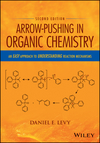In preparation for this class, I thought about how I could impress upon the students the importance of chemistry. Initially, I thought about discussing anecdotes from my childhood that reflected my interest in science. However, realizing that some of my "experiments" were extremely dangerous and certainly not executed under adult (or parental) supervision, I opted to omit details in this area. After all, I did not want to give ideas to these young and impressionable (and somewhat unpredictable) teenagers. After some thought, I decided that a two-part discussion was appropriate. The first part was to focus on how chemistry impacts everyday life and the second part was to be a brief presentation based on one of the drug discovery projects I worked on.
When I was introduced to the class, I initially took questions from the students. These generally related to what my area of expertise is and what are the steps involved in the discovery of new medicines. These questions, as they related directly to my slide presentation, were tabled until the second half of the class.
The second half of class was uneventful. I described the drug discovery paradigms of past and current years along with exploratory research relating matrix metalloproteinase inhibitors to inhibitors of endothelin converting enzyme. The students were engaged and sufficiently grossed out when I discussed studying urine and feces for drug-related metabolites. While this discussion gave them a flavor for the exciting opportunities available to those pursuing careers in the life sciences, the students seemed much more enthusiastic about the chemistry in everyday life challenge presented in the first part of my visit.
Teenagers, by nature, take a great deal for granted. They are quite reliable in their abilities to not think about where things come from. For example, money comes from parents, toilet paper comes from Costco, gasoline comes from gas stations and food/medicine comes from stores. So, when I presented the possibility that chemistry was everywhere, the students actually thought about this idea. As a follow-up, I went around the class asking each student to name something that they felt was not related to chemistry. Interestingly, at least one fourth of the class felt that chemistry was everywhere. The other students managed to come up with rather creative questions. Such questions tended to involve biological processes (vision and movement of limbs) rather than materials. Still, realizing that biology involves numerous biochemical reactions, these questions were relevant.
Towards the end of this discussion, I directed the students to consider materials. A door, for example, is made of wood. The wood is held together by glue, laminated with a coating and stained to a desired color. While the wood may be from a natural source, agriculture plays an important role in obtaining such products. Thus, the finished door was the direct result of chemical substances including:
- adhesives (glue)
- pigments (stain)
- polymers (laminate)
- pesticides
- clothing (polymers, pigments)
- toothpaste/soap/shampoo
- food (pesticides, ingredients, preservatives, packaging)
- water
- medicine
- building materials
- cars
- roads
So, chemistry is truly everywhere.





Wonderful article,thanks for putting this together! "This is obviously one great post. Thanks for the valuable information and insights you have so provided here. Keep it up!"
ReplyDeleteDissertation help
Organic chemistry is that bough of chemistry that deals with the arrangement, properties, and reactions of compounds that contain carbon. It is a highly creative science. In terms of Ph.D. population, organic chemistry is the largest chemistry discipline, in both total numbers, annual Ph.D. graduates, and in annual production.
ReplyDeleteI really appreciate this wonderful post that you have provided for us. I assure this would be beneficial for most of the people.Timber Merchants Bolton
ReplyDeleteI read this article. I think You put a lot of effort to create this article. I appreciate your work.
ReplyDeleteGenerally speaking, the jacketed glass reactor material may be from the sand, which may make machine sent back to the vibrating screen so as to be separated. Here: www.toption-china.com/products/glass-reactor-with-jacket-10l. In fact, the stone crushing machine is very popular in Africa, Middle East, India, South Asia, Sudan etc.
ReplyDelete